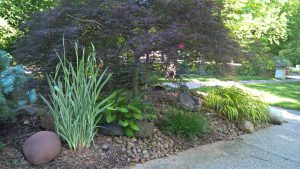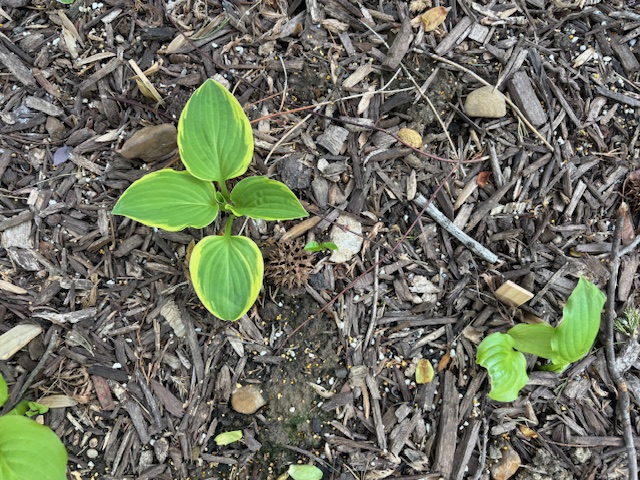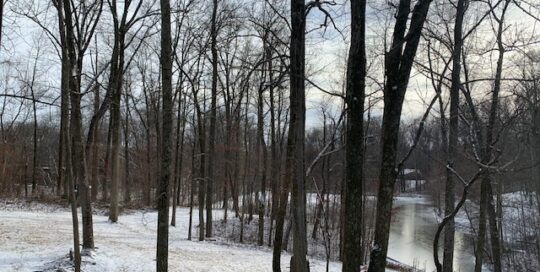Countless Shades of Green
Views: 5385

For most of my gardening life, I followed these steps in selecting and planting: (1) Go to the nursery center and buy plants on impulse; (2) Go home and figure out where to plant them. Typically, I would realize that I’d bought a plant that needed more (or less) sun – or – that I’d bought too many (or too few) plants for the space available. The result was a messy but charming hodge-podge of green, with taller plants in the front or middle, shorter plants hiding behind, not any real plan.
In 2012, a harsh winter killed the Encore azaleas in the area behind our front sidewalk. When I went to dig them out, I realized that the poor things hadn’t sent out any new roots in the four years since they’d been planted. Why? The soil was absolutely without life; not an earthworm in sight, just hard clay.
Our Odyssey
Thus began a project of epic proportions: I dug up and transplanted all the remaining plants; removed all the gravel mulch; tore out the landscape fabric, then dug down two feet and moved all that nasty clay – by hand – in a wheelbarrow – this in a bed that was 4 feet wide by 24 feet long! There were times I had to use a pickax.
After bringing in decent soil, peat, and compost, the bed was ready to replant – and I realized I had NO idea what to do next! This is the bed that visitors walk past on their way to the front door and I really didn’t want it to look like a “hodge-podge”! Wonderful Husband and I discussed design and green plant choices and couldn’t agree (of course). Finally, we asked a friend who has a real talent for landscaping to help. He gave us a rough plan and off we went to the nursery center.
Four B & B junipers; a smooth holly, three new azaleas, some smaller evergreens and two aching backs later, all I had left to do was place and plant the smaller plants, feed, and mulch.
The result
And then a miracle happened! What we’d created wasn’t a messy hodge-podge of green! Why? I’ve been thinking a lot about this, trying to learn from experience. Firstly, we asked for objective advice from a knowledgeable friend. The columnar junipers provided structure and winter interest. But I think what really made it work was the contrast in textures, shapes and shades of green. For instance, I put a variegated Siberian iris next to a chartreuse and green hosta which was underneath a fine-leaved red Japanese maple. The Japanese forest grass picked up the chartreuse from the hosta, while contrasting with the maple. The stones and my Buddha make it all look very Zen.
Although short on flowering plants, it’s interesting, attractive and welcoming. An unexpected side benefit is a boost in my self-confidence because I learned about all the countless shades of green.
Meet Dona Bergman
Dona Bergman is a founding member, Southwest Indiana Chapter of the Indiana Native Plant & Wildlife Society, and an Advanced Master Gardener.







